|
|
Travel To Hampi
Atmospheric Ruins of the Vijayanagar Empire
I decided to travel to Hampi from Goa - a long, scenic adventure by train away from the coast, over the border through dense tropical forests and past plunging waterfalls into Karnataka.
Arriving in Hospet it was a short, bumpy ride by tuk-tuk with my fellow-travellers towards the town of Hampi and the surrounding ruins of 16th Century Vijayanagara. Our excited musings on what might lie ahead fell quiet as each of us observed what unfolded in front of us. Strewn with giant, gravity defying boulders, laced with eddying streams, fringed by paddy fields and palm trees, Hampi has the landscape of a dream.
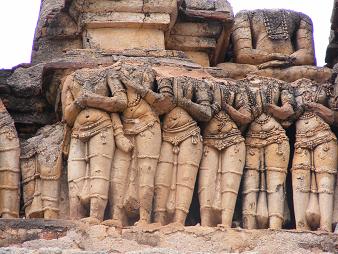
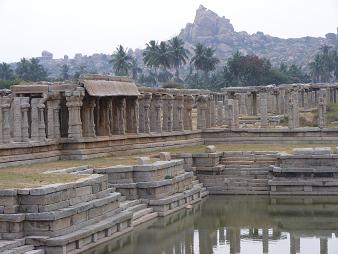
This travel to Hampi guide contains tips and accommodation options for anyone planning a stay in Hampi, advice on how to arrange a visit to Hampi, a guide to the Hampi ruins and a brief Hampi history. Hampi is hugely scenic and so there are plenty of photos as well as personal insights that we hope will be useful to you!
Exploring Hampi and its Surroundings
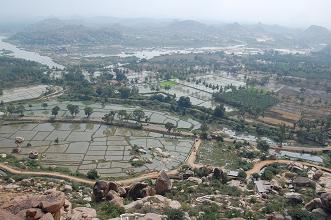
The Hanuman Temple on Anjenaya Hill
Crossing to the north bank of the Tungabhadra river you can continue (on foot or hired bike/tuk-tuk) to Anjenaya hill where steep, zig-zagging steps will lead you to a small, white-washed temple believed to be the birthplace of the Hindu deity, Hanuman. The panoramic views over Hampi's landscape are unforgettable and especially dramatic at sunrise/sunset. Look out for the troop of monkeys living here! |
The Tungabhadra River
This beautiful, winding river flows to the north of Hampi Bazaar and is crossed by a small boat service in the daylight hours. The river banks, scattered with giant boulders and surrounded by banana plantations and paddy fields are great to explore, and the Sacred Ford by the boat crossing is an important Hindu pilgrimage site. Arrive at the river early to see the bathing of Lakshmi, the Virupaksha Temple elephant. |
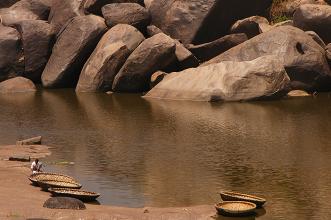
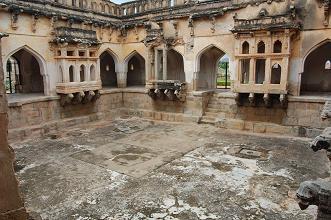
The Ruins of Vijayanagar
Dating from the 14th to the 16th Century, the ruins of Vijanagar, capital of the Hindu Vijayanagar Empire, are the reason many tourists travel to Hampi. Spread out over 26 square kilometres it is unlikely you will see the entire site in one visit, but the area surrounding the Hampi Bazaar and riverside, and the Royal Enclosure 3 km to the south are where most of the ruins lie. |
Hampi Bazaar
The small, bustling village of Hampi (its name frequently used to refer to the entire area of the Vijanagar ruins) is dominated by the distinctive Virupaksha Temple and the remnants of the old bazaar - used as a market area to this day. There is basic accommodation in town, and the village is an atmospheric place to stay, its central location encouraging meanders at dawn and dusk time strolls through the ruins. |
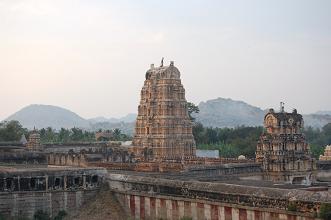
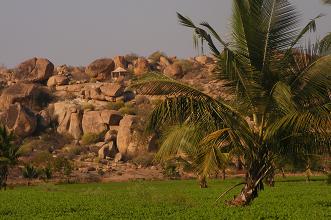
Virupapuragadda Across the River
On the north bank of the Tungabhadra river there is a growing collection of guesthouses and cafes catering for mainly foreign tourists. Set amid lush farmland and with a scenic backdrop of haphazard boulders the area becomes an inviting home away from home for many long-stay travellers in India. If you stay here, bear in mind that the boat does not cross the river after sunset! |
This section is under construction and pages on Hampi's places to stay, travel advice, history and destination guide will be coming soon. Subscribe to our site (button is in the NavBar) to be notified of anything new!
^TOP^
Click here to leave Travel To Hampi and return to Travel India Goa Guide Home
Backwater Kerala -
Beaches In Goa -
Margao In Goa -
Hill Stations of Kerala -
India Travel Tips

|
|
More amazing destinations in south India
Mountain views in Kodaikanal
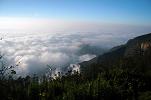
Visit the misty mountains of Kodaikanal, a stunning hill station in the Western Ghats Range.
Relax on south Goa's Patnem beach
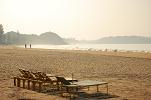
One of Goa's more laid-back beaches with some excellent shacks, Patnem is a great place to spend a week or three.
Pilgrimage town of Gokarna
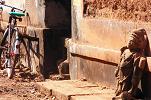
The ancient Hindu pilgrimage town of Gokarna is a stepping stone out of Goa into the fascinating culture of India's south.
|
|













